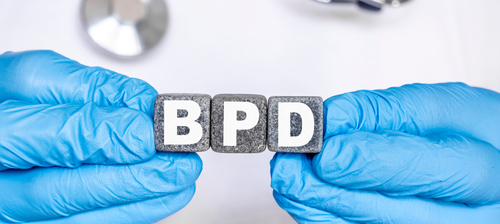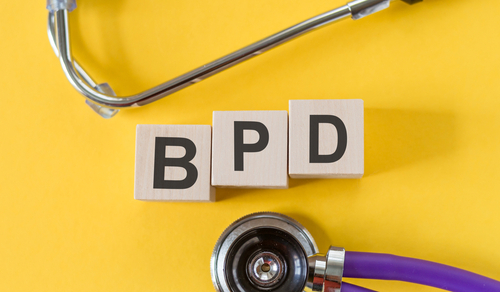
Borderline personality disorder is a mental health disorder that is listed in the Diagnostic and Statistical Manual of Mental Disorders, Fifth Edition (DSM-5). The National Institute of Mental Health (NIH) defines borderline personality disorder as an “illness marked by an ongoing pattern of varying moods, self-image, and behavior.” These patterns will often result in reckless and hasty actions, negatively affecting one’s relationships. The term “borderline” was initially coined because psychiatrists believed that its symptoms hovered on the border between psychosis and neurosis. The symptoms associated with borderline personality disorder can pervasively interfere with an individual’s ability to function optimally in his or her daily life. Common symptoms of borderline personality disorder can include any combination of the following examples, provided by the Mayo Clinic:
- Ongoing feelings of emptiness
- Risky behavior (e.g., gambling, having unsafe sex, etc.)
- Intense fear of being alone or abandoned
- Fragile self-image
- Unstable relationships
- Erratic moods
- Frequent displays of intense anger
- Stress-related, fleeting paranoia
- Suicidal behavior
- Threats of self-injury
It is not uncommon for people with BPD to feel extremely intense emotions for extended periods of time. This makes returning to a stable emotional baseline far more challenging, especially after experiencing an emotionally triggering event.
PTSD
Post-traumatic stress disorder as defined by the Mayo Clinic “is a mental health condition that’s triggered by a terrifying event—either experiencing it or witnessing it.” PTSD is recognized in the Diagnostic and Statistical Manual of Mental Disorders, Fifth Edition (DSM-5) as a diagnosable mental health condition and is listed under the new category called Trauma- and Stressor- Related Disorders. PTSD can occur when an individual has experienced severe stress or anxiety after being exposed to a traumatic event. The most widespread symptoms associated with PTSD could include any combination of the following examples, provided by the National Institute of Mental Health:
- Agitation
- Reckless behaviors
- Regressions
- Flashbacks to the event
- Irritability
- Irregular sleep
- Physical aches and pains
- Difficulty with physical contact
- Depression
- Severe anxiety
- Isolation
- Difficulty concentrating
- Low self-esteem
- Constant feelings of fear and worry
- Hyper vigilance
- Experiencing crying spells
- Tense muscles
- Suicidal ideations
- Exhaustion
- Risky behavior
- Social anxiety
The symptoms of PTSD can be incredibly distressing. Every individual who suffers from PTSD will have his or her own set of unique symptoms. Although borderline personality disorder (BPD) and post-traumatic stress disorder (PTSD) are two distinct mental health ailments with different characteristics they are often confused. This is primarily because they share a remarkably similar list of symptoms and triggers. While there is significant overlap in symptoms, the difference between BPD ad PTSD is that the symptoms of PTSD are provoked by external triggers and the symptoms of BPD stem from an inconsistent self-concept.
Disclaimer:
The information above is provided for the use of informational purposes only. The above content is not to be substituted for professional advice, diagnosis, or treatment, as in no way is it intended as an attempt to practice medicine, give specific medical advice, including, without limitation, advice concerning the topic of mental health. As such, please do not use any material provided above to disregard professional advice or delay seeking treatment.







